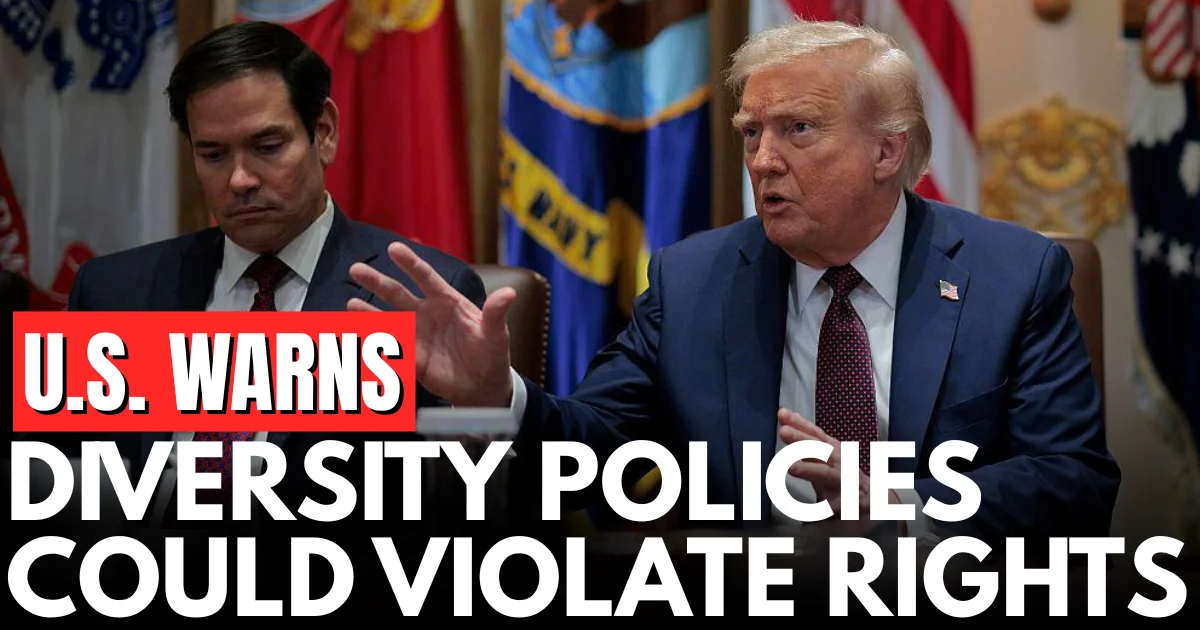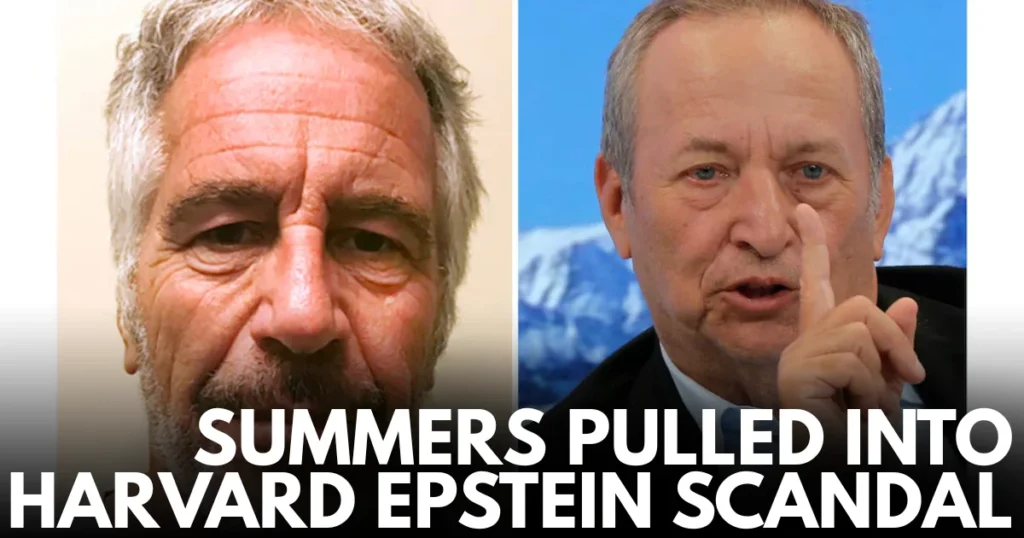New US government rules claim some international diversity policies infringe human rights. Policy details, legal arguments, and global implications analyzed.
Table of Contents
New US Government Rules Assert Some International Diversity Policies Violate Human Rights Principles
The United States government has issued new guidance asserting that certain diversity, equity, and inclusion (DEI) policies implemented by other countries may violate fundamental human rights principles, particularly regarding equal treatment and non-discrimination. The policy position creates potential diplomatic friction and raises complex questions about competing interpretations of civil rights and fairness.
The announcement represents a significant shift in how American officials characterize international diversity initiatives, framing some programs as discriminatory rather than remedial. For multinational corporations, international organizations, and foreign governments, these new rules create compliance challenges and policy conflicts requiring careful navigation.
Understanding the New US Position
American government officials articulated a policy framework asserting that certain diversity programs violate principles of equal treatment by making decisions based on protected characteristics including race, gender, and national origin.
Core policy arguments:
The US position distinguishes between general efforts to expand opportunity access and specific programs that consider protected characteristics in decision-making. Officials argue that the latter category violates equal treatment principles.
Government guidance suggests that policies explicitly favoring or disfavoring individuals based on demographic characteristics constitute discrimination regardless of intended remedial purposes. This interpretation emphasizes formal equality over substantive equality approaches.
The framework applies particularly to government policies and programs receiving US funding or involving American partnerships. Compliance expectations extend to international organizations and foreign entities collaborating with US agencies.
Legal foundations cited:
American officials reference the U.S. Constitution’s Equal Protection Clause and Civil Rights Act provisions prohibiting discrimination. They argue these principles should guide international human rights interpretations.
Citations of international human rights documents emphasize provisions guaranteeing equal treatment and non-discrimination. However, interpretations of how these principles apply to diversity programs vary significantly across legal traditions.
Recent U.S. Supreme Court decisions regarding affirmative action in higher education inform the policy position. Court rulings limiting race-conscious admissions policies provide domestic legal precedents supporting the international stance.
Specific Policies and Programs Affected
The new guidance potentially affects various international diversity initiatives across multiple sectors and contexts.
Employment diversity programs:
Hiring policies that establish demographic targets or preferences for underrepresented groups could face scrutiny. Programs explicitly considering race, gender, or nationality in employment decisions raise concerns under the new framework.
Training and development initiatives focusing specifically on particular demographic groups might require modification. Career advancement programs targeting specific populations could face questions about equal treatment compliance.
Government contracting:
Procurement policies favoring businesses owned by particular demographic groups could conflict with the US position. Set-aside programs and preferential consideration based on owner characteristics present compliance challenges.
International development programs targeting assistance to specific demographic communities might require restructuring. Aid distribution based on recipient characteristics raises equal treatment questions.
Educational initiatives:
Scholarship and fellowship programs designated for particular demographic groups face potential conflicts. Educational opportunity programs considering race, gender, or national origin in selection could require modification.
Competing Interpretations of Human Rights
The policy debate reflects fundamental disagreements about how human rights principles apply to diversity and equality programs.
Formal equality approach:
The US position emphasizes treating individuals identically regardless of demographic characteristics. This “colorblind” or “characteristic-neutral” approach views any consideration of protected traits as inherently discriminatory.
Proponents argue that formal equal treatment represents the most principled approach to fairness. They contend that remedial intentions don’t justify differential treatment violating equal protection.
Substantive equality perspective:
Alternative interpretations focus on achieving equal outcomes and opportunities rather than merely identical treatment. This approach recognizes historical and systemic disadvantages affecting particular groups.
Supporters argue that remedial programs addressing documented disparities promote rather than violate equality principles. They distinguish between invidious discrimination and benign classifications serving remedial purposes.
International human rights frameworks often incorporate substantive equality concepts permitting targeted programs addressing documented disadvantages. Many countries’ legal systems explicitly allow affirmative measures.
International Reactions and Responses
Foreign governments and international organizations responded to the US position with varying degrees of concern and disagreement.
European Union perspective:
EU member states generally maintain that their diversity policies comply with international human rights law and regional legal frameworks. European Court of Justice precedents permit positive action measures under certain circumstances.
European officials emphasized that targeted programs addressing documented discrimination represent legitimate policy tools under international law. They distinguish their approaches from quota systems or rigid preferential treatment.
United Nations position:
UN human rights bodies historically endorsed special measures addressing disadvantaged groups as consistent with international conventions. Committee interpretations of key treaties permit temporary special measures.
International Covenant on the Elimination of All Forms of Racial Discrimination explicitly allows affirmative action programs. Similar provisions appear in conventions addressing gender discrimination.
Developing nations concerns:
Countries addressing historical discrimination and promoting national unity through inclusive policies expressed concern about US characterizations. Post-conflict societies often implement programs fostering integration and addressing historical exclusion.
Economic development strategies sometimes include targeted programs for disadvantaged regions or communities. These initiatives could face scrutiny under the US framework.
Implications for Multinational Corporations
American companies operating internationally and foreign corporations with US connections face complex compliance landscapes.
Corporate diversity program challenges:
Multinational firms must navigate potentially conflicting requirements across jurisdictions. Programs compliant with European or other legal frameworks might conflict with US interpretations.
American companies operating abroad face questions about whether to align with host country requirements or US government positions. Legal and reputational risks exist regardless of chosen approaches.
Compliance strategy considerations:
Legal counsel advise careful program documentation emphasizing broad opportunity expansion rather than demographic targeting. Framing programs neutrally while achieving diversity goals requires sophisticated approaches.
Geographic variation in program design might become necessary. Different policies for different jurisdictions add complexity but reduce compliance conflicts.
Risk assessment processes must evaluate potential conflicts with US government positions. Companies weigh legal, financial, and reputational factors when designing international diversity initiatives.
Legal and Constitutional Context
The US position reflects particular American constitutional traditions and recent judicial developments.
Supreme Court precedents:
Recent rulings limiting affirmative action in university admissions established strict scrutiny standards for race-conscious programs. These decisions emphasized individual rights over group-based remedies.
However, Court precedents also recognized compelling interests in diversity under narrowly tailored circumstances. The legal landscape remains complex with context-specific applications.
Constitutional interpretation debates:
Originalist judicial philosophy emphasizes constitutional text and historical understanding. This interpretive approach generally disfavors demographic classification regardless of purpose.
Living constitutionalism allows greater flexibility interpreting equality principles in light of evolving understanding. This approach more readily accommodates remedial programs addressing documented disparities.
Practical Implementation Questions
Translating policy positions into operational requirements creates numerous practical challenges.
Definitional ambiguities:
Distinguishing permissible outreach from impermissible preferential treatment often proves difficult. Programs can be characterized differently depending on implementation details and framing.
Determining when diversity goals become problematic quotas involves subjective judgments. Legal lines between aspirations and requirements remain contested.
Enforcement mechanisms:
How the US government will enforce its position on international diversity policies remains unclear. Potential tools include funding conditions, partnership restrictions, and diplomatic pressure.
Compliance verification presents practical challenges especially regarding foreign government policies. Information gathering and assessment involve complex judgments.
Broader Policy and Diplomatic Implications
The new US position affects international relations beyond just diversity program compliance.
Diplomatic tensions:
Characterizing allied nations’ policies as human rights violations creates friction in bilateral relationships. Policy disagreements could complicate cooperation on other issues.
International organizations face pressure to reconcile differing member state positions. Consensus becomes more difficult when fundamental principles face conflicting interpretations.
Global human rights discourse:
The US stance potentially undermines American leadership on international human rights issues. Critics argue that selective human rights emphasis reduces credibility on other matters.
Alternatively, proponents contend that principled positions on equal treatment strengthen moral authority. Consistency in anti-discrimination positions supports broader human rights advocacy.
What This Means Going Forward
The policy creates ongoing challenges for various stakeholders navigating competing legal and ethical frameworks.
For international organizations:
Programs must balance US government positions with other member state requirements and organizational mandates. Diplomatic solutions and flexible approaches become necessary.
For corporations:
Legal compliance strategies must account for potentially conflicting jurisdictional requirements. Documentation, program design, and risk assessment gain importance.
For civil society:
Advocacy organizations working internationally face questions about program design and funding sources. Balancing effectiveness with compliance requires careful consideration.
FAQ SECTION
1. What exactly does the new US policy say about diversity programs?
The US government position asserts that certain diversity, equity, and inclusion policies considering protected characteristics like race, gender, or national origin in decision-making may violate equal treatment principles and constitute discrimination. The policy distinguishes between general opportunity expansion efforts and specific programs explicitly favoring or disfavoring individuals based on demographic characteristics. Officials argue the latter category violates human rights regardless of intended remedial purposes, emphasizing formal equality over substantive equality approaches.
2. How does this affect companies operating internationally?
Multinational corporations face potentially conflicting compliance requirements across jurisdictions. Programs compliant with European or other legal frameworks might conflict with US government interpretations. American companies operating abroad must decide whether to align with host country requirements or US positions, facing legal and reputational risks either way. Companies may need geographic variation in program design with different policies for different jurisdictions to manage compliance conflicts.
3. Do other countries agree with the US interpretation?
No, many countries and international organizations disagree with the US characterization. The European Union maintains that its diversity policies comply with international human rights law, with European Court precedents permitting positive action measures. UN human rights bodies historically endorsed special measures addressing disadvantaged groups as consistent with international conventions. Many countries’ legal systems explicitly allow affirmative measures distinguishing between remedial programs and invidious discrimination.
4. What is the difference between formal and substantive equality?
Formal equality emphasizes treating individuals identically regardless of demographic characteristics – a “colorblind” approach viewing any consideration of protected traits as discriminatory. Substantive equality focuses on achieving equal outcomes and opportunities rather than merely identical treatment, recognizing historical and systemic disadvantages affecting particular groups. The US position emphasizes formal equality while many international frameworks incorporate substantive equality concepts permitting targeted programs addressing documented disadvantages.
5. What happens to programs that don’t comply with the US position?
Enforcement mechanisms remain unclear but could include US funding conditions, partnership restrictions, and diplomatic pressure. Programs receiving American funding or involving US agency collaboration face strongest compliance expectations. However, practical enforcement presents challenges especially regarding foreign government policies. Companies and organizations must assess legal, financial, and reputational risks when determining how to respond to potentially conflicting jurisdictional requirements.
CONCLUSION
The new US government position characterizing certain international diversity policies as human rights violations creates complex challenges for multinational corporations, international organizations, and foreign governments. The policy reflects particular American constitutional traditions and recent judicial developments while conflicting with many countries’ legal frameworks and international human rights interpretations.
This situation illustrates fundamental disagreements about how equality principles apply to programs addressing historical and systemic disadvantages. Whether formal equal treatment or substantive equality better serves human rights represents an ongoing philosophical and legal debate with practical implications.
For stakeholders navigating these competing frameworks, careful legal analysis, sophisticated compliance strategies, and diplomatic flexibility become essential. The tension between differing equality interpretations will likely persist, requiring ongoing adaptation as policies and judicial precedents evolve.
Understanding these complex issues helps organizations make informed decisions balancing legal compliance, ethical commitments, and practical effectiveness in their diversity and inclusion efforts.
This article provides informational analysis of policy developments and does not constitute legal advice. Organizations should consult qualified legal counsel regarding specific compliance questions.

